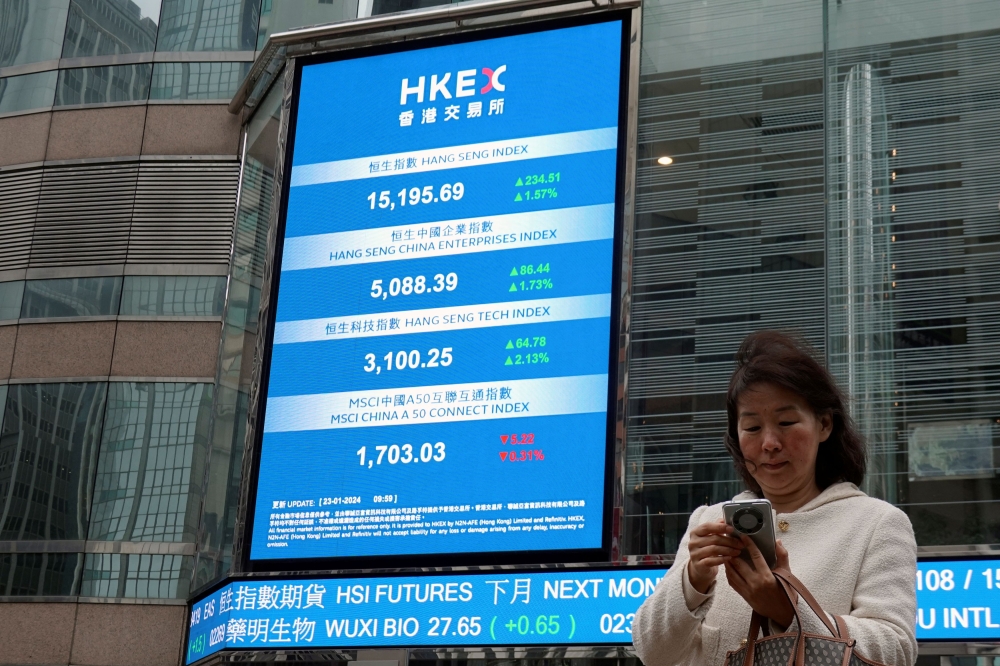Asia Pacific E-Commerce Market Size & Share, 2033
The Asia Pacific E-Commerce Market is projected to grow from USD 4.28 trillion in 2024 to USD 11.19 trillion by 2033, at a CAGR of 11.28%.
E-commerce, or electronic commerce is the buying and selling of goods and services through digital platforms, primarily over the internet. It encompasses a broad spectrum of transactions, including business-to-consumer (B2C), business-to-business (B2B), consumer-to-consumer (C2C), and mobile commerce (m-commerce). China continues to lead the market with robust infrastructure and homegrown giants such as Alibaba and Pinduoduo driving innovation. Meanwhile, India's e-commerce sector is expanding rapidly due to government initiatives like Digital India and the proliferation of affordable smartphones. Additionally, Southeast Asia’s growing middle class and rising internet adoption are further fueling the expansion of regional players like Shopee and Tokopedia.
One of the primary drivers of the Asia Pacific e-commerce market is the exponential increase in smartphone penetration and high-speed internet access across both urban and rural areas. According to the International Telecommunication Union (ITU), as of 2023, over 70% of the population in the Asia Pacific had access to mobile broadband networks, significantly higher than the global average. This widespread connectivity has enabled seamless online shopping experiences, especially through mobile applications. In India, smartphone users are projected to reach 900 million by 2025, as reported by the Indian Cellular Association, making mobile devices the preferred medium for online transactions. Moreover, the availability of affordable data plans and the rollout of 5G networks have enhanced browsing speeds and reduced latency, encouraging greater engagement with e-commerce platforms. This digital transformation has not only empowered consumers but also allowed small businesses to establish an online presence without significant capital investment. The convergence of mobile technology and e-commerce is thus acting as a catalyst for sustained market growth across the Asia Pacific.
Another key driver fueling the Asia Pacific e-commerce market is the rapid development and adoption of secure, convenient, and inclusive digital payment systems. Governments and private sector players have been investing heavily in building robust fintech ecosystems that facilitate frictionless online transactions. Additionally, the rise of digital wallets, contactless cards, and buy-now-pay-later (BNPL) solutions has further boosted consumer confidence in e-commerce. In Southeast Asia, platforms such as GrabPay, GoPay, and Touch ‘n Go have gained mass adoption, enabling even first-time internet users to engage in online shopping. As per a joint report by Visa and Deloitte, the number of cashless transactions in the Asia Pacific grew by 18% year-on-year in 2023, indicating a deepening shift toward digital commerce.
A major restraint impeding the smooth expansion of the Asia Pacific e-commerce market is the persistent inefficiencies in logistics and supply chain infrastructure in emerging economies. Even in larger markets like India, where e-commerce is booming, challenges such as fragmented transportation systems and seasonal disruptions caused by monsoon rains continue to affect delivery timelines.
In Southeast Asia, cross-border logistics pose additional complications due to varying regulatory frameworks and customs procedures. While companies like Amazon and Flipkart have invested in their own logistics arms, smaller players often rely on third-party providers, which may lack scalability and service consistency.
Concerns around data privacy and cybersecurity threats continue to act as a significant drag on consumer trust is limiting the growth of the Asia Pacific e-commerce market. Many consumers remain hesitant to share personal and financial information online due to fears of identity theft, fraud, and unauthorized data usage. In India, the Personal Data Protection Bill, though delayed, has sparked ongoing debates about how user data should be collected, stored, and shared, creating uncertainty for both domestic and foreign e-commerce firms. E-commerce platforms are prime targets for cybercriminals due to the vast amount of sensitive customer data they handle.
One of the most promising opportunities within the Asia Pacific e-commerce market is the emergence of social commerce where consumers discover and purchase products directly through social media platforms. This trend has gained momentum due to the region’s high social media engagement rates, influencer culture, and mobile-first consumer behavior. According to Meta’s 2024 Asia Pacific Digital Trends Report, more than 60% of online shoppers in Southeast Asia had made a purchase through a social media platform in the past year, with TikTok Shop, Instagram Shopping, and Facebook Marketplace playing pivotal roles. TikTok Shop, in particular, disrupted traditional e-commerce models by integrating live-streaming, real-time product demonstrations, and instant purchasing options. Brands are increasingly leveraging influencers and micro-influencers to boost visibility and conversion rates.
Cross-border e-commerce is emerging as a major growth avenue for the Asia Pacific e-commerce market with the regional trade liberalization, improving logistics infrastructure, and increasing consumer demand for international products. According to the RCEP Secretariat, the agreement covers approximately 30% of global GDP and is expected to boost intra-regional trade flows significantly. China remains a dominant player in this space, with platforms like Alibaba.com and Shein offering global shipping options to consumers in Southeast Asia, Australia, and Oceania. Meanwhile, Japanese and South Korean brands are leveraging e-commerce exports to reach younger, fashion-conscious audiences in emerging markets like Vietnam and the Philippines. According to a joint report by the Asian Development Bank and UNCTAD, cross-border e-commerce in the Asia Pacific grew by 22% in 2023, outpacing domestic e-commerce growth.
One of the foremost challenges confronting the Asia Pacific e-commerce market is the lack of harmonized regulations across countries, which complicates compliance for multinational retailers and logistics providers. Each country in the region has its own set of import duties, tax policies, data localization laws, and consumer protection regulations, which is making it difficult for businesses to operate seamlessly across borders.
For instance, China enforces strict customs controls under the General Administration of Customs of the People's Republic of China (GACC), requiring detailed documentation for cross-border e-commerce transactions. In contrast, countries like Malaysia and Thailand have introduced simplified VAT regimes for digital imports but maintain stringent labeling and certification requirements for imported goods. India’s Foreign Trade Policy mandates that all e-commerce imports must be routed through designated customs clearance nodes, adding time and cost to deliveries. Additionally, data privacy laws vary widely across the region. While Japan and South Korea have well-established data protection frameworks aligned with global standards, others like Cambodia and Laos are still developing comprehensive legislation.
The Asia Pacific e-commerce market is witnessing intensified competition, not only from global giants like Amazon and eBay but also from a surge of homegrown platforms and private-label brands. Local players possess a distinct advantage in understanding regional consumer preferences, cultural nuances, and supply chain dynamics by allowing them to capture significant market share even against well-funded international rivals. In China, Alibaba and Pinduoduo dominate the market with deeply embedded logistics and payment ecosystems tailored to Chinese consumers. Similarly, in Southeast Asia, Shopee and Tokopedia have leveraged localized marketing strategies and aggressive pricing to outperform foreign entrants. Private-label brands are also gaining traction, particularly on large marketplace platforms. Companies like Nykaa in India and JD.com in China have launched exclusive product lines across beauty, electronics, and fashion, undercutting established international brands in terms of price and customization.
The B2C e-commerce segment was the largest by capturing dominant share of the Asia Pacific e-commerce market share in 2024 with the increasing adoption of online retail platforms among consumers, especially in urban areas. Moreover, the rise of direct-to-consumer (D2C) brands and live-streamed commerce has further strengthened the B2C model. Platforms like TikTok Shop and Instagram Shopping have enabled real-time purchasing decisions, enhancing consumer engagement.
The B2B e-commerce segment is likely to grow with an expected CAGR of 13.2% during the forecast period. One of the key drivers behind this growth is the increasing preference of small and medium enterprises (SMEs) to source raw materials and finished goods through online platforms. Additionally, governments are promoting digital trade corridors and paperless transactions to improve efficiency. For instance, Singapore’s TradeTrust initiative enables secure digital verification of trade documents, streamlining cross-border B2B transactions. Furthermore, the integration of AI-driven procurement tools, automated inventory management, and blockchain-based contracts is transforming how businesses transact.
The smartphones segment held the dominant share of the Asia Pacific e-commerce market in 2024. Asia Pacific leads globally in mobile-first internet usage, particularly in countries like India, Indonesia, and Vietnam. Affordable smartphones and low-cost mobile data plans have also contributed to this trend. According to Ookla’s Speedtest Global Index, average mobile download speeds in South Korea exceeded 120 Mbps in 2023 by enabling seamless shopping experiences even during peak hours.
The digital wallets segment is likely to grow with an expected CAGR of 14.8% from 2025 to 2033. This rapid growth is attributed to the widespread adoption of contactless and instant payment solutions, particularly in emerging economies where traditional banking services are less accessible. In Southeast Asia, platforms such as GrabPay (Malaysia/Singapore), GoPay (Indonesia), and Touch ‘n Go (Malaysia) have gained mass traction, offering cashback incentives and loyalty programs to encourage digital payments.
The fashion and apparel segment was accounted in holding 28.4% of the Asia Pacific e-commerce market share in 2024. Countries like China, India, and Indonesia have witnessed a surge in online fashion consumption, particularly among Gen Z and millennial shoppers who prefer personalized shopping experiences. In Southeast Asia, Shopee Fashion and Tokopedia reported a year-on-year growth of 30% in apparel sales, aided by influencer marketing and flash sales. Social commerce is playing a pivotal role in driving fashion e-commerce growth.
The beauty and personal care segment is likely to witness a CAGR of 16.4% in the next coming years. This growth is primarily driven by rising consumer interest in skincare, haircare, and wellness products, particularly among younger demographics. In China, Tmall reported a 25% YoY increase in beauty product sales in 2023, with live-streamed shopping events hosted by influencers playing a major role in driving conversions. South Korea remains a hub for K-beauty innovation, with brands like Innisfree and Laneige leveraging e-commerce to expand into neighboring markets.
China was the largest contributor with an expected CAGR 42% of total regional revenues in 2024. According to the Ministry of Commerce, China’s e-commerce market size reached USD 800 billion in 2023, with a highly developed digital ecosystem, robust logistics networks, and homegrown tech giants like Alibaba, Pinduoduo, and JD.com. The country’s advanced digital payment infrastructure, led by Alipay and WeChat Pay, supports seamless transactions, with over 90% of online payments occurring via digital wallets. Government policies such as the "Dual Circulation" strategy and cross-border e-commerce pilot zones have further boosted domestic and international trade. Additionally, the rise of live-stream commerce, especially on platforms like Taobao Live and Douyin (TikTok), has revolutionized consumer engagement.
India was ranked second by holding 12.3% of the Asia Pacific e-commerce market share in 2024. The proliferation of smartphones and cheap mobile data has played a crucial role in this growth. As per the Telecom Regulatory Authority of India (TRAI), India recorded over 700 million internet users by early 2024, many of whom access e-commerce platforms via mobile apps like Flipkart, Amazon India, and Meesho. Government initiatives such as Digital India, Startup India, and UPI have created a conducive environment for e-commerce expansion. The Unified Payments Interface (UPI), managed by NPCI, processed over 10 billion transactions monthly in 2023, facilitating frictionless online payments. Additionally, the rise of social commerce and D2C brands has diversified the market. Companies like Nykaa, Lenskart, and Boat have successfully leveraged direct-to-consumer strategies to capture niche audiences.
Japan e-commerce market is likely to witness a highest CAGR in the next coming years. Unlike in other APAC countries, Japan’s e-commerce growth is steady rather than explosive, given its already saturated digital infrastructure. Rakuten, Amazon Japan, and Yahoo! Japan Shopping dominate the market, offering a wide range of products backed by reliable delivery and customer service.
Cash-on-delivery options are declining, replaced by digital wallets and card payments. As per the Bank of Japan, credit and debit card usage in online transactions rose by 14% in 2023, which is reflecting a shift toward cashless payments. Elderly consumers, a significant demographic in Japan, are increasingly adopting e-commerce for groceries and healthcare products.
South Korea e-commerce market growth is likely to grow in the next coming years. Consumers in South Korea exhibit sophisticated digital behavior, with a preference for same-day delivery and curated shopping experiences. Major players like Coupang, GMarket, and Auction.co.kr offer AI-driven recommendations and drone-assisted logistics to meet high expectations. Live-streamed commerce is gaining popularity, especially among Gen Z and millennials.
Australia e-commerce market growth is esteemed to have steady pace in the next coming years. Digital payments are widely accepted, with credit cards and buy-now-pay-later (BNPL) services like Afterpay and Klarna gaining significant traction. The government’s emphasis on cybersecurity and data privacy has also fostered consumer trust. The Privacy Act reforms and mandatory breach notifications introduced in 2023 have ensured greater transparency for online shoppers.
The key market players in the Asia Pacific E-Commerce Market include Alibaba Group, JD.com, Rakuten, Shopee (Sea Ltd.), Flipkart, Lazada, Coupang, Tokopedia, Pinduoduo, Myntra, Tiki Corporation, Kogan.com, Bukalapak, and Catch.com.au.
The competition in the Asia Pacific e-commerce market is highly dynamic, characterized by the coexistence of global tech giants and rapidly growing local players. While international firms like Amazon and eBay have made significant inroads, they often face fierce competition from homegrown platforms such as Alibaba, Shopee, and Tokopedia, which leverage deep market knowledge and consumer trust to maintain dominance. The region’s vast population, varying levels of digital adoption, and diverse regulatory environments further complicate the competitive dynamics, necessitating tailored strategies for each market.
Innovation plays a central role in differentiating competitors, with many focusing on enhancing mobile-first experiences, integrating AI for personalized recommendations, and adopting live-streamed commerce to boost engagement. Additionally, partnerships with financial institutions and investment in digital wallets have become essential for improving transaction ease and expanding access to underbanked populations.
New entrants and niche players continue to disrupt traditional models, particularly in verticals such as fashion, beauty, and groceries. The market remains fluid, offering both opportunities and challenges for businesses aiming to scale sustainably in this high-growth region with governments promoting digital trade corridors and cross-border e-commerce initiatives.
One of the leading players in the Asia Pacific e-commerce market is Alibaba Group, a Chinese multinational conglomerate that operates one of the world’s largest online marketplaces. Alibaba has played a transformative role in shaping global e-commerce through its B2B, B2C, and cloud-based platforms. Its influence extends beyond China into Southeast Asia via strategic investments in companies like Lazada, which is reinforcing its regional dominance. Another major player is Amazon, which has significantly expanded its presence across APAC by entering key markets such as India, Japan, and Australia. Amazon's focus on localized fulfillment centers, digital payments, and customer-centric innovations has enabled it to compete effectively against domestic giants, contributing to its strong foothold in the region. Rakuten is also a dominant force in the Asia Pacific e-commerce landscape, particularly in Japan and other East Asian markets. The company offers a comprehensive ecosystem integrating retail, fintech, and digital content. Rakuten continues to drive innovation through AI-driven personalization, loyalty programs, and integrated commerce experiences, strengthening its regional and global relevance.
A key strategy employed by leading players in the Asia Pacific e-commerce market is deep localization, where companies tailor their offerings to regional preferences, languages, payment methods, and cultural nuances. This approach enables global brands to gain traction in diverse markets with distinct consumer behaviors.
Another crucial tactic is expanding logistics and fulfillment networks. Major e-commerce firms are investing heavily in warehousing, same-day delivery, and supply chain optimization to meet rising consumer expectations for speed and reliability, especially in emerging markets with vast geographic landscapes.
Lastly, integrating social commerce and live-streaming features has become a powerful way to enhance user engagement and drive conversions. Platforms are leveraging influencers, real-time interactions, and entertainment-driven shopping formats to attract younger audiences and differentiate themselves in an increasingly competitive environment.
By Product Category
- Other Product Categories
By Country
- India
- China
- Japan
- South Korea
- Australia
- New Zealand
- Thailand
- Malaysia
- Vietnam
- Philippines
- Indonesia
- Singapore
- Rest of APAC








